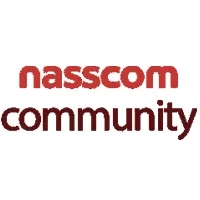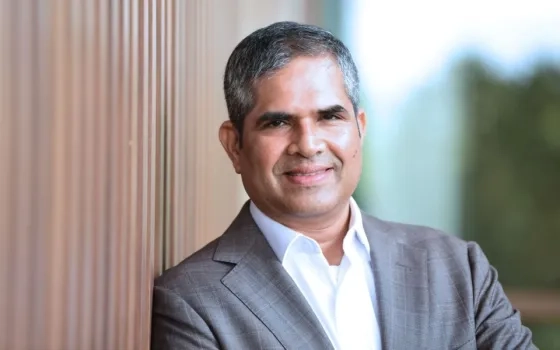"While AI offers remarkable capabilities, fostering empathy, emotional intelligence, and human interaction is a must. It's not just changing how we teach; it's changing how students learn. Secure and Ethical use of AI is really essential when it comes to leveraging GenAI - given the sensitivity of learner demographics."
Q1. Being a 3-decade-old organization, over the years, how have you integrated technology into the education value chain?
My journey with Magic began in 2014, and I am proud to speak to the company's narrative since 1989. Magic initially started as a pure-play digital company, designing e-learning products using available technology and media. As technology evolved, Magic adapted to it, moving digital learning products from video cassette players to CDs, DVDs, browsers, and mobile devices. Magic's primary focus is to understand how people learn and use that knowledge to create digital learning products and platforms that enhance learning efficacy, enabling learners to improve their competencies with less time and effort.
Magic leverages the technology and human expertise (education domain SME) to build immersive learning products and platforms that improve learner engagement and thus learning efficacy substantially at lower costs. Magic's Accessibility & DEI practice focuses on addressing a wider audience of learners, irrespective of their learning styles, physical and cognitive abilities, ethnicity, and race by leveraging technology. This is one of the essential beliefs at Magic, and it shows in its positioning statement "Digital Learning for Everyone."
In the education world, multiple stakeholders must be considered, and Magic uses technology to empower each stakeholder to ensure the learner is well-supported in their journey. Besides providing advisory and outsourcing services to design and build learning products and platforms, Magic offers its in-house built SaaS platform, MagicBox, to deliver digital learning products to teachers, students, and parents. Magic is proud of its 30+ years of legacy in creating and improving the education value chain by creatively using technology with a clear focus on learners and teachers. We often summarize this in a statement “engineering technology to deliver better learning efficacy”.
Q2. What is your take on the "funding winter" in the EdTech industry?
“Funding winter” in the EdTech industry is an intriguing phase indeed, given that education as a sector is mostly funded by NGOs/Foundations (donors)/Governments the world over. The play where private & IPO markets funding is taking place is still on the fringes when you compare to the overall funding of the education sector - BMO in its 2020 Education Industry report estimated private spending to be in the range of 8% to 8.5% of total education spending in the US. The private & IPO funding is going through its cyclical phase which is natural given the unprecedented surge we had seen in investments during the 2020-22 period.
I believe this phase of “funding winter,” is more about fine-tuning and redefining the narrative rather than a state of gloom. This is the education business, we all are playing a long game where we impact a generation over decades. When I look at investing, I will invest in technology and business that is sustainable and scalable. I would less worry about the ups and downs of the market.
Q3. What are the key challenges facing the EdTech sector, and how have these challenges changed post-COVID era?
For us in the technology business, it is easy to get carried away with what we build in the digital arena. Yes, the promise of digital education to help leapfrog skills building for many is huge. The limitations placed by brick & mortar infrastructure and teacher shortage can be easily overcome with digital technologies. We got a glimpse of that during the pandemic. However, the push to go completely digital will create new challenges - that of the digital divide. So while technology opened new doors, it also exposed disparities making it an urgent need to make digital learning truly inclusive, reaching every nook and corner, regardless of socioeconomic status or geographical location. The overload of content and resources was and continues to be a significant challenge - meaning we are missing quality in learning programs. The vast sea of online content often lacks curation, making it overwhelming for learners to discern quality resources. Navigating this information to find credible, structured, and contextually relevant content is crucial. Finally, EdTech companies are still struggling with appropriate revenue models as they make shifts into the digital arena. This means investors will have to be patient.
Q4. How does Gen AI have an impact on the education sector?
Generative AI has been a game-changer in education. For starters, let us talk about three areas where GenAI can play a big role.
- First, GenAI can be used to improve the learning efficacy for a learner, delivering instruction in an adaptive manner.
- Second, the use of GenAI to improve the management of learning - whether it is (i) making the teacher’s life easier, or (ii) making the administration work at the school district simpler, or (iii) making the EdTech customer services team more effective.
- Third, GenAI will have a huge impact on EdTech companies and education publishers who create learning content and platforms - GenAI can help them speed up their processes at a fraction of the cost.
However, the role of humans will only increase to validate what Gen AI is creating, and more importantly, to ensure that the content forces the learner to critically think of the output delivered by the GenAI.
While AI offers remarkable capabilities, fostering empathy, emotional intelligence, and human interaction is a must. It's not just changing how we teach; it's changing how students learn, ensuring they get the best out of their educational experience. Secure and Ethical use of AI is really essential when it comes to leveraging GenAI - given the sensitivity of learner demographics.
Magic launched its DeepSight AI framework over 5 years ago, and with the advent of GenAI, we are ready as our clients call for help to implement the AI tools in their workflow.
Q5. How does the EdTech market look in the next 2-3 years, and how does Magic EdTech's future roadmap look?
HolonIQ estimates that the Global Education and Training Expenditure should be a $10 trillion industry by 2030. Our positioning is very simple - we help our clients to design, build, deliver, and support digital learning products and platforms. We focus on enabling Digital Learning for Everyone, by engineering technology to deliver better "Learner Efficacy".
We are very bullish on growth in the education markets. Learning is no longer sequential (K-12, Higher-ed, etc) but it will be lifelong for everyone on this planet. Humans are going to have to learn continuously because we believe huge disruptive forces are at play, and our society’s traditional infrastructure, systems, and processes are going to be significantly disrupted in the coming decades. You will understand why we emphasize “everyone” once I walk you through three big disruptive forces that will impact our lives.
- First, is AI, Robotics, and unlimited computing power with quantum computers. What this means is that everything can be digitized and automated. The role of humans is going to constantly evolve in our society. We talked about the disruptive forces that AI has unleashed in the market, and the obvious impact (like reskilling and job losses) of AI has been seen by all of us.
- Second is Climate. Climate change and its impact on the industries, geographies, and economies globally. We don't talk enough about that - and how that will impact lifestyles, jobs, migrations, and wars. Immigration itself will impact the reskilling market.
- Third, Changes in the Demographics (think biotech, synthetic bio) - the increase in life expectancy and aging population means rethinking lifelong learning. There will not be enough social security and Medicare funding that the government can pay to take care of the aging population.
How do you make everyone remain productive in a society that is impacted by all three forces - AI, climate change, and aging demographics? I see Magic EdTech’s potential to serve everyone in the society globally - because our work will only increase. We will continue to innovate and help our clients design, build, deliver, and support digital learning products and platforms. We don't take it lightly when we say “ Magic is Committed to humanity’s pursuit of happiness by making lifelong digital learning sustainable, affordable, and accessible”.
Q6. You are in people's business. How do you attract and retain talent?
People are important for businesses to succeed. We look at three things in a business- what market it serves, what it offers, and who is running it. We invest in businesses with talent who can adapt to changes and make the business successful. At Magic, we want to attract the right talent by offering them good jobs, roles, and pay. We want to make sure that their personal goals match with our business goals. So talent comes before the market or offerings!
We're passionate about transforming education and look for candidates who share our mission. What do we look for in a candidate? We check if the candidate brings a growth mindset. The three key levers to support a growth mindset are collaboration, innovation, and celebration- and we look for how the candidate will play within this cultural fabric of the company. Our leadership team is known to be hands-on and engaged. At Magic Pathshala, our team can volunteer to help with our CSR initiatives and it makes them feel good because they are making a direct positive impact on the wider community. We balance our hard-working and creative approach with fun celebrations outside of work to ensure that our team members forge lasting friendships with each other. We think this creates a team that becomes committed to Magic and thus, helps with the retention.












